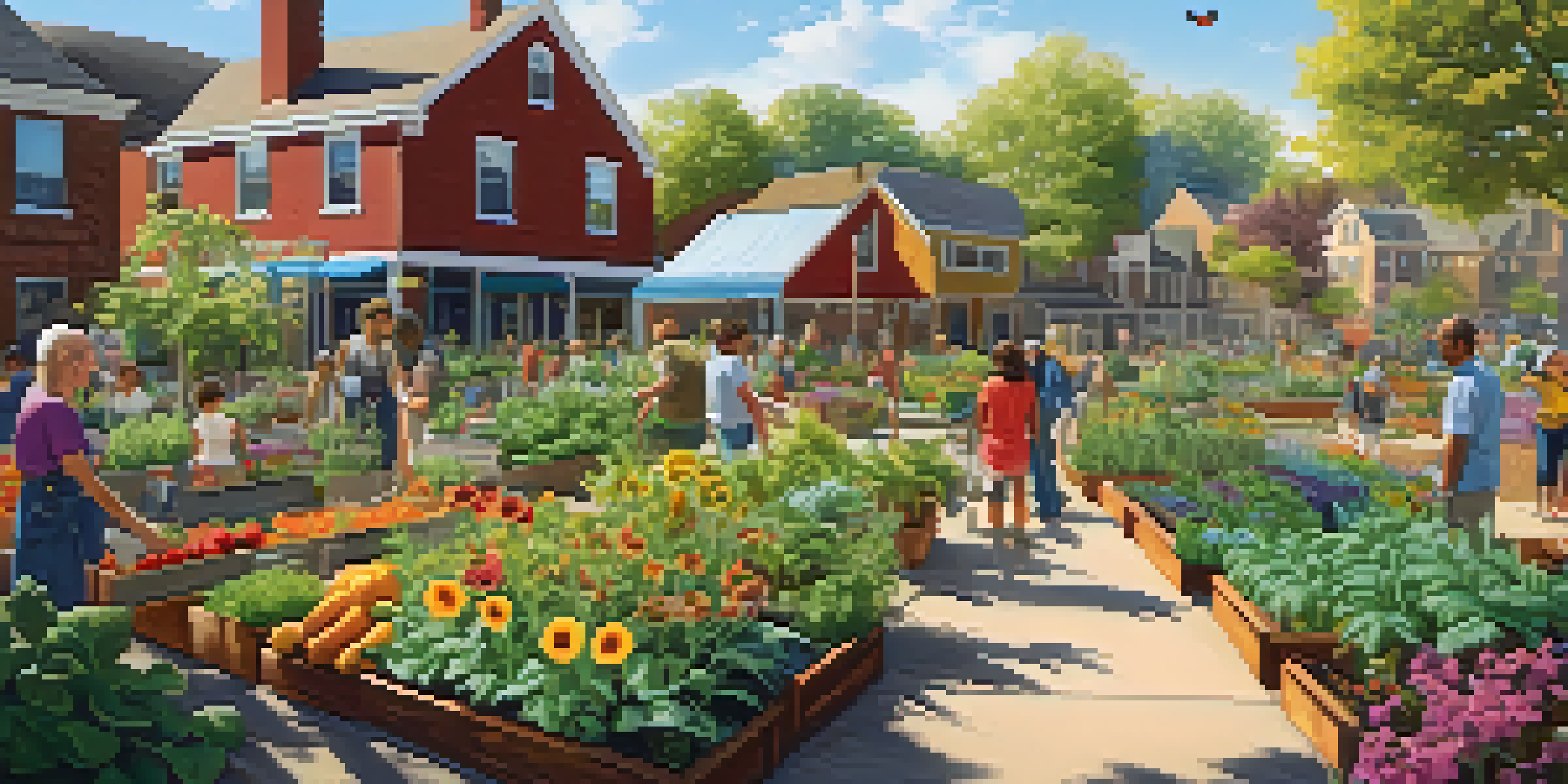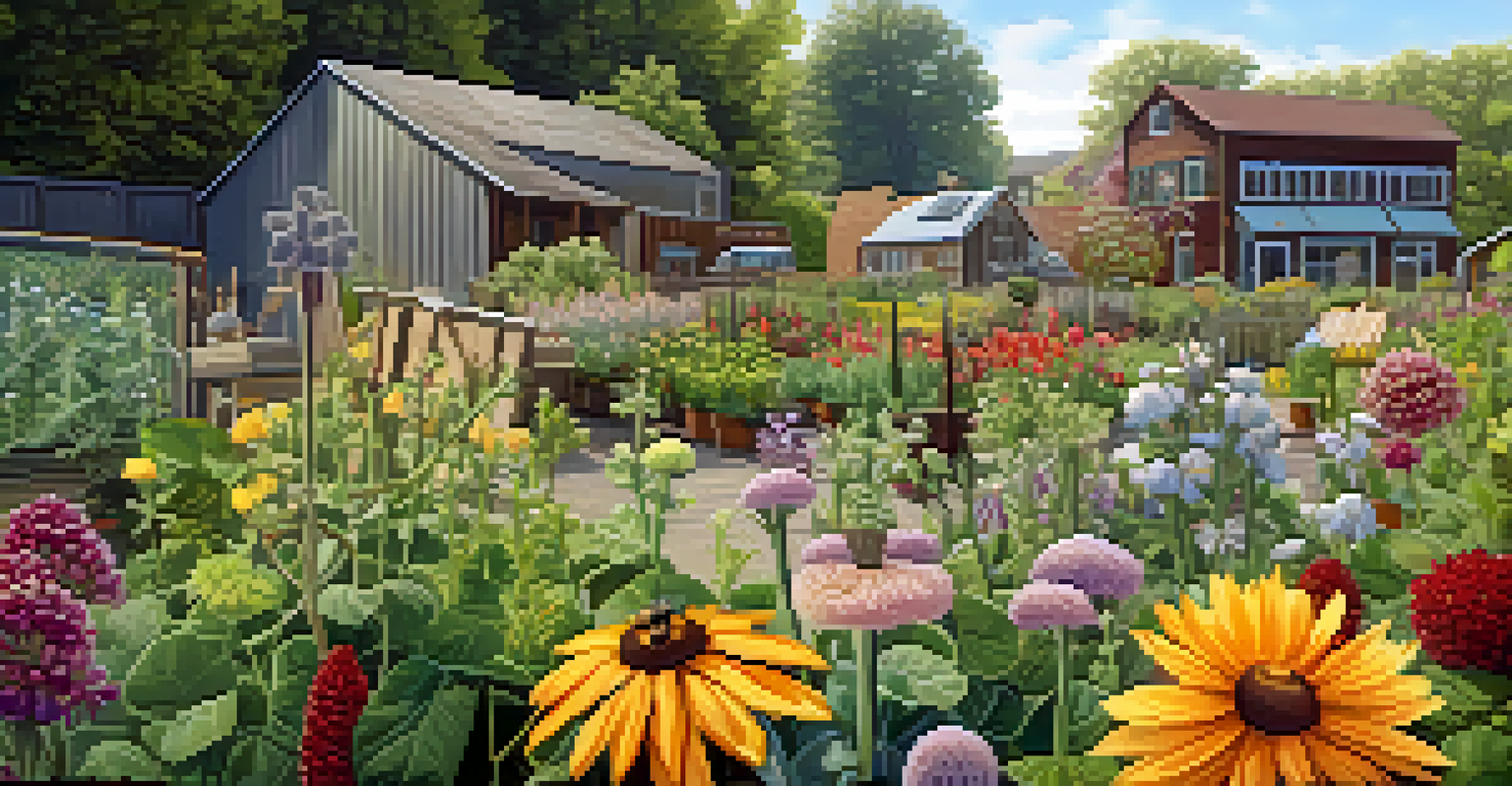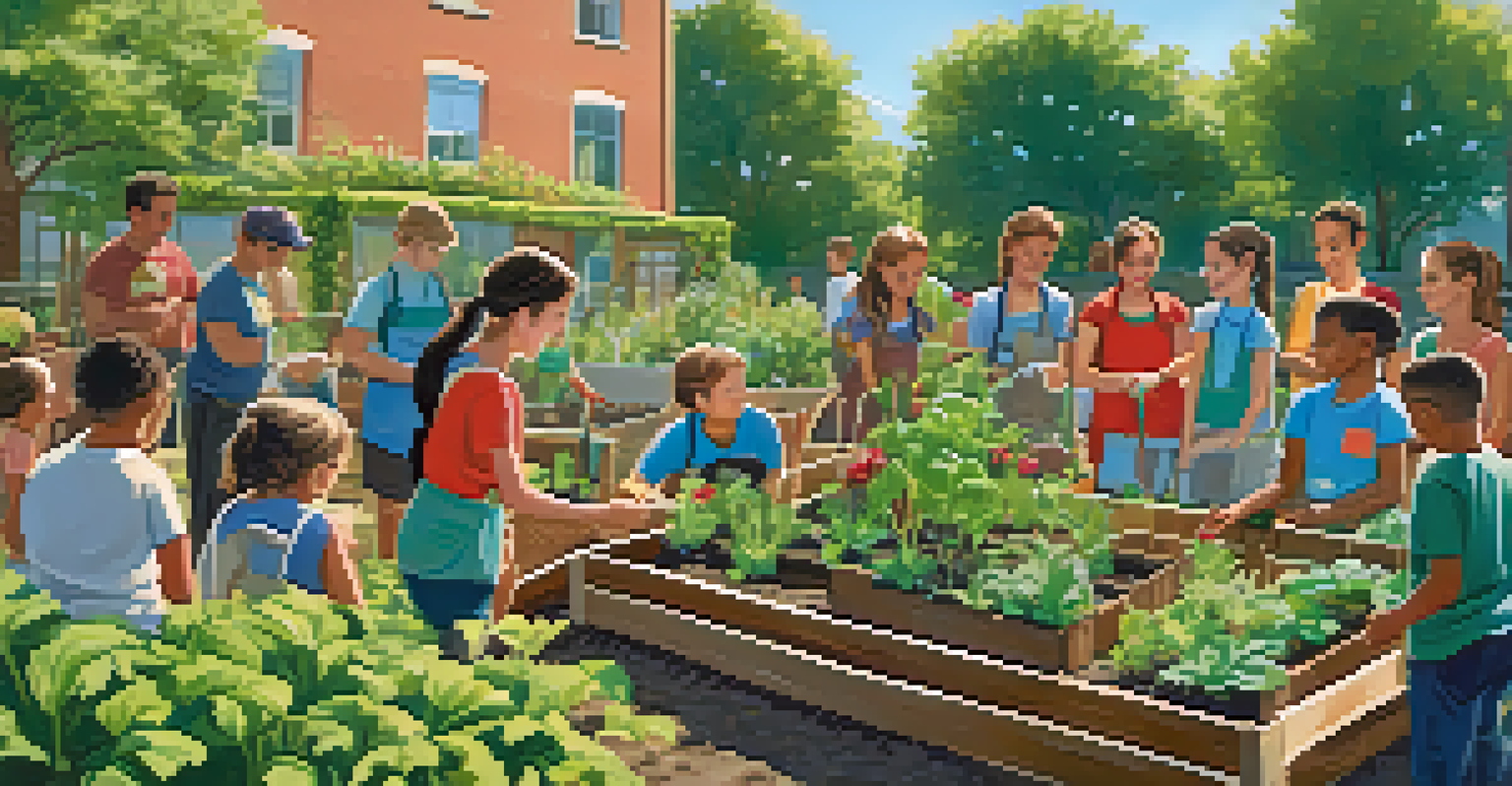Community Gardens: Enhancing Urban Biodiversity and Air Quality

What Are Community Gardens and Their Benefits?
Community gardens are shared spaces where people come together to cultivate plants, often in urban settings. These gardens not only beautify neighborhoods but also foster community spirit and collaboration. They serve as green oases, offering a break from the concrete jungle and providing fresh produce to local residents.
The best time to plant a tree was twenty years ago. The second best time is now.
By growing fruits, vegetables, and flowers, community gardens enhance local biodiversity. They attract various pollinators, such as bees and butterflies, and support the ecosystem by providing habitats for birds and beneficial insects. This increased biodiversity plays a crucial role in maintaining a healthy environment.
Additionally, these gardens play a vital role in improving air quality. Plants absorb carbon dioxide and release oxygen, contributing to cleaner air. The greenery also helps to filter pollutants and dust from the atmosphere, creating a healthier living space for urban dwellers.
The Role of Biodiversity in Urban Environments
Biodiversity refers to the variety of life found within a specific area, and it's essential for ecosystem stability. In urban areas, where biodiversity is often compromised, community gardens serve as critical refuges for various species. They can help restore ecological balance by providing diverse habitats within city limits.

By introducing different plant species in community gardens, we encourage a balanced ecosystem. For example, planting native species can attract local wildlife and help maintain the area's natural heritage. This not only enhances biodiversity but also creates a more resilient urban environment that can better adapt to changes, such as climate fluctuations.
Community Gardens Enhance Biodiversity
By cultivating a variety of plants, community gardens create habitats that support local wildlife and promote ecological balance.
Moreover, increased biodiversity in urban settings can lead to improved mental health for residents. Studies have shown that exposure to nature, including diverse plant life, can reduce stress levels and enhance overall well-being. Community gardens, therefore, become a source of both ecological and emotional support.
Improving Air Quality Through Green Spaces
Air quality is a significant concern in urban areas, often impacted by pollution from vehicles and industrial activities. Community gardens can mitigate these effects by acting as natural air filters. Trees and plants in these gardens absorb harmful pollutants and particulates, helping to cleanse the air we breathe.
In every walk with nature one receives far more than he seeks.
In addition to filtering air, community gardens also contribute to temperature regulation. Urban heat islands, areas that experience higher temperatures due to human activities, can be cooled down by the presence of greenery. This cooling effect can lead to reduced energy consumption and improved comfort for city residents.
Furthermore, the presence of green spaces like community gardens encourages sustainable practices among residents. As people engage with gardening, they often become more aware of environmental issues and may adopt eco-friendly habits, such as composting or using organic gardening methods, further enhancing air quality.
Community Gardens: A Hub for Education and Awareness
Community gardens serve as excellent platforms for education, especially regarding environmental stewardship. Many gardens offer workshops and events that teach participants about sustainable gardening practices, biodiversity, and the importance of clean air. This hands-on approach helps people connect with nature and understand their role in protecting it.
Schools often collaborate with community gardens to provide students with experiential learning opportunities. For instance, children can learn about plant biology, ecology, and nutrition while actively participating in gardening activities. This kind of education fosters a sense of responsibility and encourages the next generation to value and protect natural resources.
Gardens Improve Urban Air Quality
Community gardens act as natural air filters, absorbing pollutants and providing cleaner air for residents in urban areas.
Moreover, community gardens can raise awareness about local environmental issues. By bringing people together, they create a space for discussions around sustainability, climate change, and urban planning. This collective knowledge-sharing can inspire community action and lead to more significant changes in local environmental policies.
Social Benefits of Community Gardening
Beyond their environmental impact, community gardens provide significant social benefits. They create opportunities for neighbors to come together, fostering a sense of belonging and community cohesion. In a world where urban isolation is common, these gardens become social hubs where friendships can blossom.
Volunteer efforts in community gardens also promote teamwork and collaboration. Participants often work together to plant, maintain, and harvest crops, developing valuable skills and a sense of accomplishment. This cooperative spirit can strengthen community bonds and cultivate a culture of mutual support.
Additionally, community gardens can be a source of food security for local residents. By growing their fruits and vegetables, community members can reduce their reliance on grocery stores, which may not always provide fresh produce. This empowerment through gardening can enhance overall community resilience.
Challenges Faced by Community Gardens
Despite their numerous benefits, community gardens often face challenges that can hinder their success. One significant issue is access to land; in many urban areas, available land is scarce and expensive. This can make it difficult for communities to establish and maintain gardens, especially in low-income neighborhoods.
Another challenge is the need for ongoing maintenance and commitment from participants. Community gardens require regular care, and when enthusiasm wanes, the gardens can quickly become overgrown or neglected. Ensuring that there are dedicated volunteers and resources to support the garden’s upkeep is crucial for its longevity.
Social Cohesion Through Gardening
These gardens foster community spirit by bringing neighbors together, promoting collaboration, and enhancing food security.
Lastly, community gardens may encounter bureaucratic hurdles, such as zoning laws or regulations regarding land use. Navigating these legalities can be complex, and communities often need to advocate for their rights to create and sustain these green spaces. Overcoming these obstacles is essential for maximizing the benefits of community gardens.
The Future of Community Gardens in Urban Planning
As cities continue to grow and evolve, integrating community gardens into urban planning is becoming increasingly vital. More planners are recognizing the importance of green spaces in enhancing urban biodiversity and air quality. By incorporating gardens into new developments or revitalizing existing spaces, cities can create healthier environments for their residents.
Future community gardens may also embrace innovative technologies, such as vertical gardens or hydroponics, to maximize space efficiency. These advancements can help urban dwellers access fresh produce, even in high-density areas where traditional gardening may be challenging. Such initiatives can further enhance food security and environmental sustainability.

Ultimately, the future of community gardens lies in collaboration between residents, local governments, and organizations. By working together, communities can advocate for policies that support green spaces and promote initiatives that foster biodiversity and air quality. The potential of community gardens to create lasting positive change in urban environments is immense.